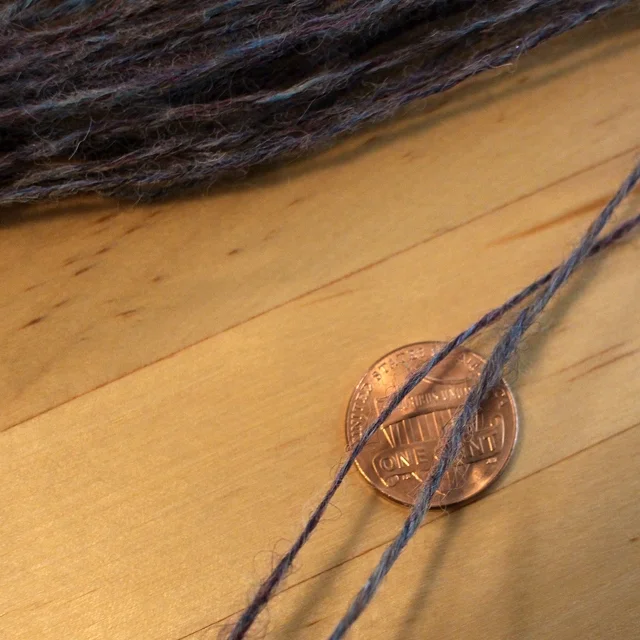Spinning a Gradient Part 2: Sampling
/This post could also be titled “Sampling Is Your Friend And Will Help You Get The Handspun You Want”. Doesn’t really roll of the tongue though.
After comparing the amount of roving I’ve spun and the amount that’s still waiting on my desk, it’s a pretty safe bet that I’m not going to be done spinning the gradient by Thursday. Any new fiber goodies I bring home from Interweave Yarn Fest will just have to wait until this is done. I’m a one project at a time kind of spinner. And this is good practice for the fine spinning I’ll be working on next.
Since it had been awhile since l last sat down at my wheel, I decided to start with the smallest nest at the end of the gradient to get my sea legs back so to speak. Halfway through that nest I decided it’d be a good sample to figure out how to spin the rest of the 6 ounces.
To be completely honest I wasn’t thrilled with what was on the bobbin when I finished. It was finely spun but hairy because I’d fallen into my default long-draw drafting style. When I brushed up on how to spin fine yarn, one tip was that you should be able to see through the fibers you’re actively drafting. I took that one a little too far because there were times I could have counted the individual fibers going into the single. This wouldn’t have been a problem if I could have put in enough twist during drafting, but I don’t have the right tools to put that much twist into so fine a single.
The single rested over night so I could chain-ply it the next day. I had a few reasons for chain-plying. One, I like how it looks after finishing. Two, I wanted to preserve the colors as much as possible. Three, and this reason is purely practical, it would be easier to keep the gradient in order as I worked.
It’s normally pretty easy for me to find a rhythm making the “chains” and plying, but not when the single keeps breaking. I had to join it together or at least fake it more than 4 times. Got it done though. Let it rest another night before skeining it up. The skein was definitely lace weight and about 49 yards.
I set the twist by soaking the skein in cool water with Eucalan, snapping it over my hands, and hanging it up to dry. The transformation was amazing. The yarn plumped up into an airy woolen spin. It definitely wasn’t lace weight anymore and ranged from fingering weight to sport weight. The twist even seems reasonably balanced. Happy ending, right? Kind of. The yarn is beautiful but a complete hassle to spin and not the smooth handspun I want.
So I changed two things for the second nest which have had a big impact. One, I’m making an effort to spin with the inch worm forward draft and not fall into long-draw. It’s slow going but the latest single is much smoother and even shiny. Two, I’m spinning this single a little thicker. I can still see through the drafting triangle but I can’t count the individual fibers. Much happier with single #2 and I’m definitely planning to spin the other 6 nests this way. Lucious handspun gradient, here I come.








